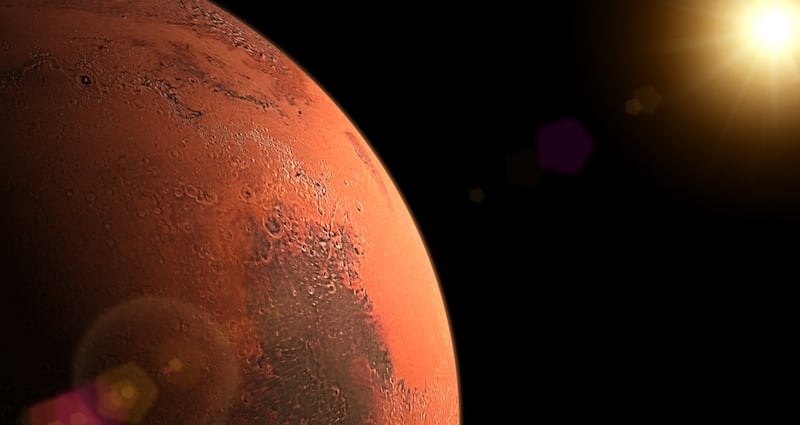Nasa has logged another extraterrestrial first on its latest mission to Mars: converting carbon dioxide from the Martian atmosphere into pure, breathable oxygen, the US space agency has said.
The unprecedented extraction of oxygen, literally out of thin air on Mars, was achieved Tuesday by an experimental device aboard Perseverance, a six-wheeled science rover that landed on the Red Planet February 18th after a seven-month journey from Earth.
In its first activation, the toaster-sized instrument dubbed Moxie, short for Mars Oxygen In-Situ Resource Utilization Experiment, produced about 5g of oxygen, equivalent to roughly 10 minutes’ worth of breathing for an astronaut, said Nasa. Although the initial output was modest, the feat marked the first experimental extraction of a natural resource from the environment of another planet for direct use by humans.
“Moxie isn’t just the first instrument to produce oxygen on another world,” said Trudy Kortes, director of technology demonstrations within Nasa’s Space Technology Mission Directorate. She called it the first technology of its kind to help future missions “live off the land” of another planet.
The instrument works through electrolysis, which uses extreme heat to separate oxygen atoms from molecules of carbon dioxide, which accounts for about 95 per cent of the Mars atmosphere. The remaining 5 per cent, which is only about 1 per cent as dense Earth’s, consists primarily of molecular nitrogen and argon. Oxygen exists on Mars in negligible trace amounts.
But an abundant supply is considered critical to eventual human exploration of the planet, both as a sustainable source of breathable air for astronauts and as a necessary ingredient for rocket fuel to fly them home.

The volumes required for launching rockets into space from Mars are particularly daunting.
According to Nasa, getting four astronauts off the Martian surface would take about 15,000lbs (7 tonnes) of rocket fuel, combined with 55,000lbs (25 tonnes) of oxygen.
Living on Mars
Transporting a one-tonne oxygen-conversion machine to Mars is more practical than trying to haul 25 tonnes of oxygen in tanks from Earth, according to Moxie principal investigator Michael Hecht, of the Massachusetts Institute of Technology.
Astronauts living and working on Mars would require perhaps 1 tonne of oxygen between them to last an entire year, said Mr Hecht.
Moxie is designed to generate up to 10g per hour as a proof of concept. And scientists plan to run the machine at least another nine times over the next two years under different conditions and speeds, said Nasa.
The first oxygen conversion run came a day after the space agency achieved the historic first controlled powered flight of an aircraft on another planet with a successful takeoff and landing of a miniature robot helicopter on Mars.
Like Moxie, the twin-rotor chopper dubbed Ingenuity hitched a ride to Mars with Perseverance, whose primary mission is to search for fossilised traces of ancient microbes that may have flourished on Mars billions of years ago. – Reuters











